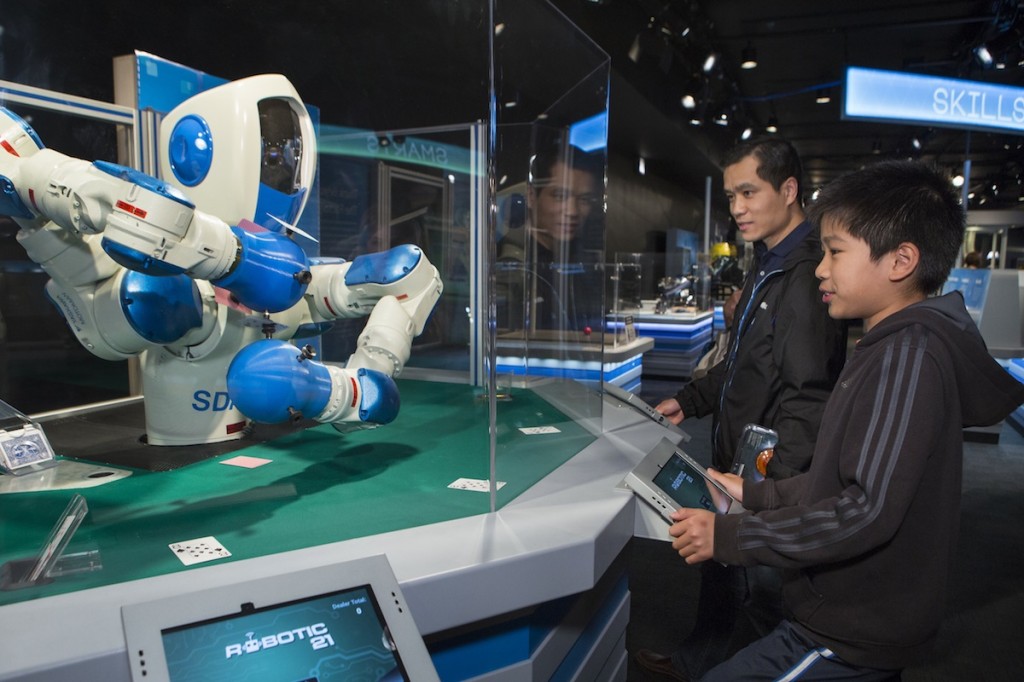The following article is courtesy of The Real Chicago magazine. For more like it, visit www.TheRealChicago.com
By Allyssa Campbell-Sawyer
Location: Museum of Science and Industry, 5700 S. Lake Shore Drive
www.MSIChicago.org
Background: In late May, the Museum of Science and Industry revealed their futuristic Robot Revolution exhibit. The showcase of robotic technology aims to provide visitors with a new perspective on these machines and the way they affect the world today. Robots taken from companies and universities worldwide are on display for the first time in an exhibit that will change the way you think about man-made technology.
What to expect: Robot Revolution is divided into four sections: Cooperation, Smarts, Skills and Locomotion. As visitors walk through the self-guided exhibit, they will see robots that reflect each of the aforementioned attributes. The sections don’t simply show and tell with each robot — they seek to make guests think about how similar they truly are to humans. Be sure to read the accompanying descriptions for each robot, as they give additional information about the significance of what the robot can do, how it works and how it has been used to help humans. The educational aspect of the exhibit is just as important as the aesthetics.
“We want [guests] to be able to see and experiment with robots that are used in a wide variety of settings, from medical surgeries, search-and-rescue missions, to factory jobs, assistance for the disabled, and even for companionship and learning,” says John Llewellyn, senior exhibit developer.
Robot Revolution has many stations that allow people to interact and control the robots, and it is especially kid-friendly. I mean, how cool is it that you get to play tic-tac-toe with a robot? However, visitors shouldn’t expect the entire exhibit to be interactive; about half of what is on display is simply meant for looking rather than touching. Specifically, the sections of Skills and Locomotion don’t have as many robots that guests can interact with.
What stood out: There were so many things about this exhibit that stood out. The Skills section was the most interesting to me because of the one or two stations that allowed guests to test the grip of the robots. You could take an object and place it in the robotic hand and watch the hand adjust to the size and shape of whatever you placed in it. One station in the Cooperation section that intrigued me as well involved standing in front of a webcam and having the robot beneath it mimic your emotions. Adults and children stood in awe in front of the screen, making different faces while the robot approximated the emotions they were expressing.
Final thoughts: This exhibit is definitely worth checking out. It gives more than the caricatured image of robots we’re so used to seeing in television and movies and provides depth to the concept of robotics that will make people of all ages think critically about where modern technology is going. I’d recommend it for the common museum visitor, the engineering buff or the kid in all of us who just wants to play with cool toys.




